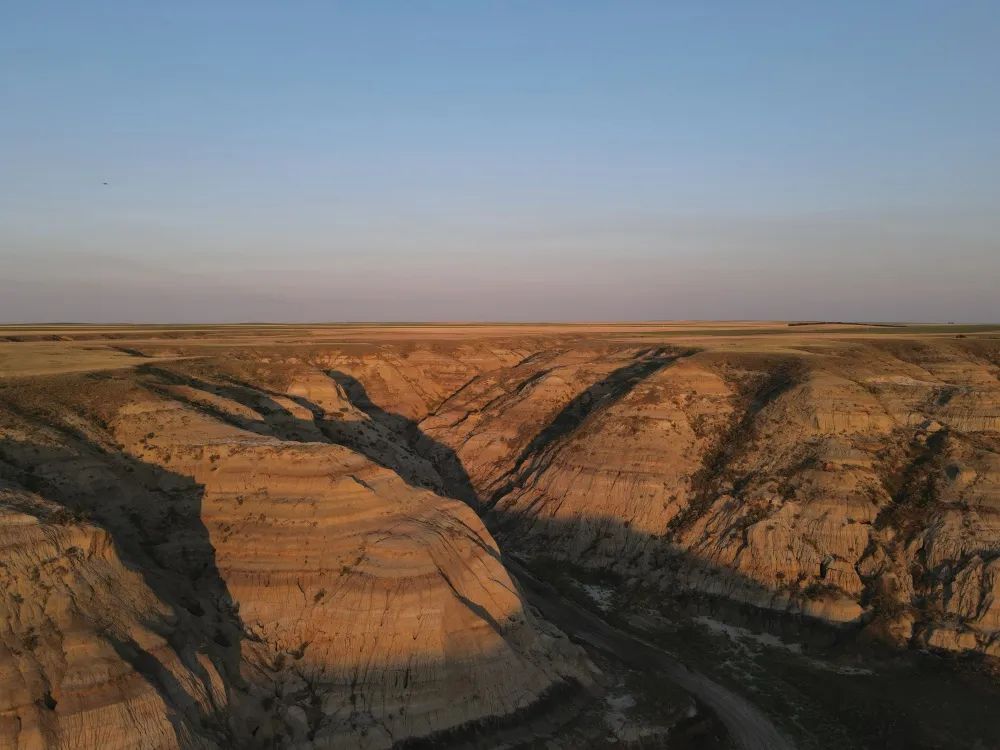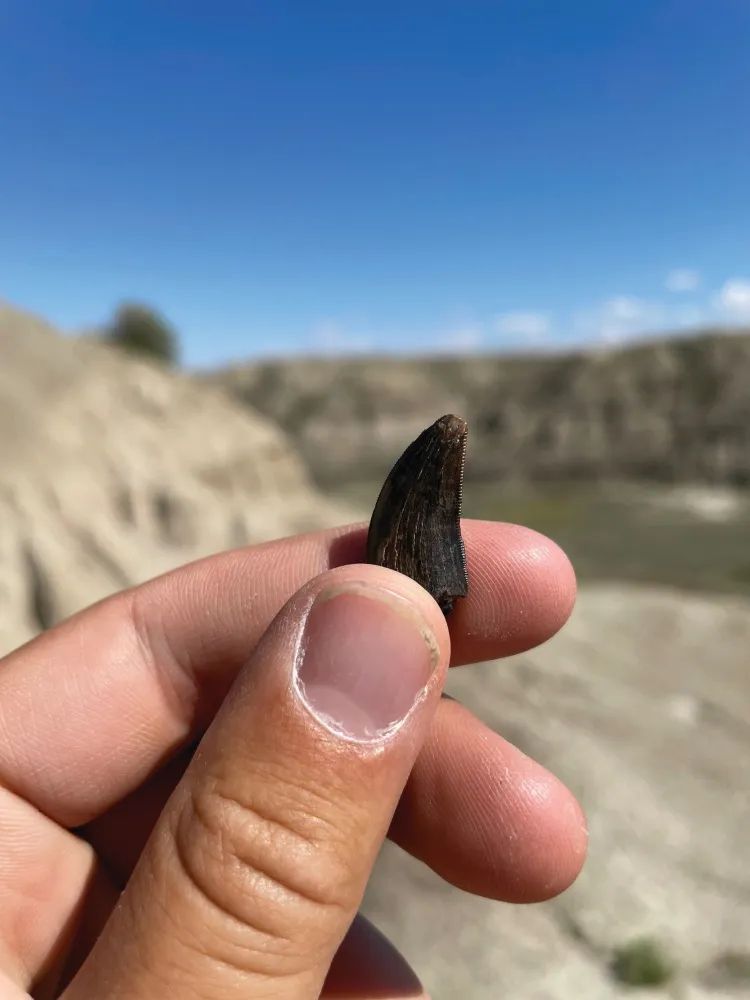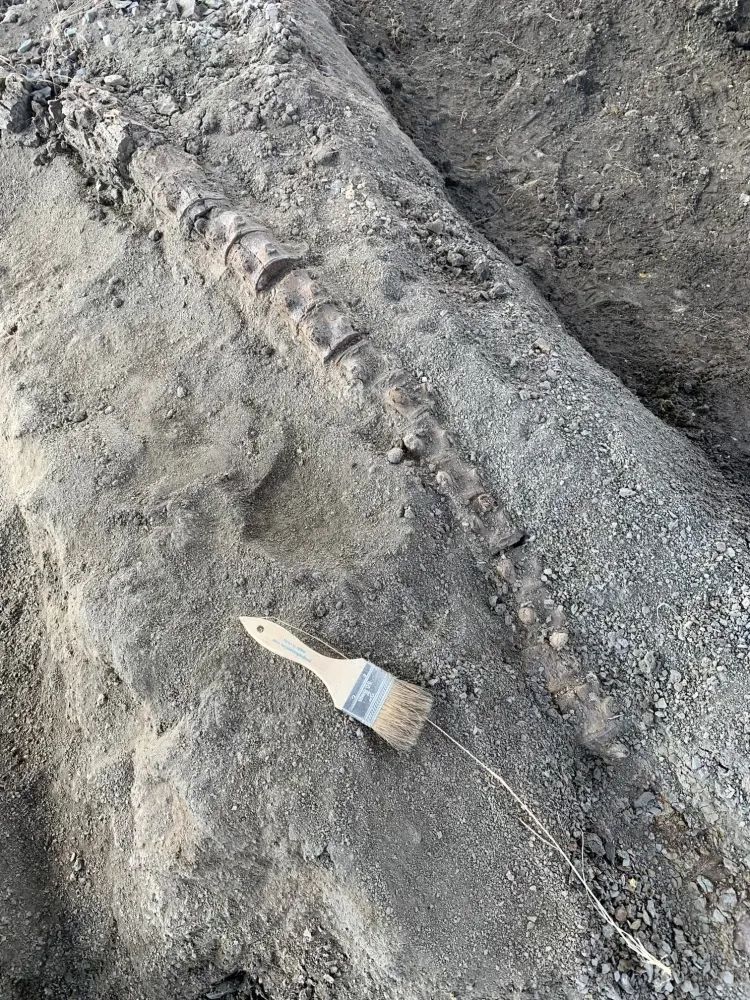
Outcrop of fossil-bearing rock | photo courtesy of Heath Caldwell
Montana’s Dinosaur Country: Close to Home, Eons Away
May 2022
by stephanie hobby
In eastern Montana, rocky terrains span the horizon. Seemingly barren, the sandstones and shales underfoot tell a different story. Close to home, but eons away: this is dinosaur country. Tens of millions of years of history come into focus just under your feet. Our region is rich with opportunities to seek out that history for yourselves, provided you know and obey updated laws, which carry hefty fines and even jail time if broken.
Montana State University paleontology student Heath Caldwell knows firsthand the joy of uncovering new findings. Like many young students, the Helena native found himself drawn to dinosaurs, but unlike most students, he had the opportunity to delve into that passion. He and his father, Rodney, a geohydrologist, have a shared interest in exploring landscapes, seeking out nooks and crannies across the region where fossils are likely to lurk.
One evening in the summer of 2020, they discovered something big. Really, really, size-of-a-bus, ruler-of-the-ocean, big.
Five hundred feet from where they parked, Rodney spotted about 20 feet of vertebrae sticking out of the ground, which they later learned belonged to a nearly 40-foot-long mosasaur. Mosasaurs were relatively common apex predators of the Western Interior Seaway, a shallow sea that cut through North America, dividing it in two from the Arctic Ocean to the Gulf of Mexico. The animals have been found up and down North America, particularly in the Midwest. With strong jaws and huge teeth, they ate just about anything they encountered.
As the discoverers, Heath and his dad earned the right to name the animal. Heath chose Vickie for his mom. “I thought, well, a terrifying animal needs a scary name,” he laughed, adding that the real-life Vickie loved it.
They immediately contacted the Carter County Museum in Ekalaka, Montana, where curators were enthusiastic about securing the proper permits and legally digging up this specimen. Over the summer of 2021, the Caldwells joined campers from the Montana Learning Center and worked under the expert guidance of paleontologists and museum professionals to unearth the animal’s remains.
A trifecta of factors makes eastern Montana ideal for fossil seekers: rocks of the right age, the right type, and they are exposed. While plenty of rocks nationwide fit the first two criteria, many of them are covered by forests or developments.

Tyrannosaur tooth | photo courtesy of Heath Caldwell
And not all sedimentary rocks contain fossils; some are just too old. “Animals have only existed on the planet for about 600 million years. So we have this vast rock assemblage, but really only a small part of it actually has the animal fossils that most people would be interested in finding,” Caldwell said, adding that some rocks in Montana are around 1.6 billion years old, formed long before animals came on the scene.
Due to the intense heat during their formation, you also won’t find fossils in igneous or metamorphic rock. A geologic map can help narrow down the search but check with the Bureau of Land Management before going out to look for fossils to ensure you know the rules and restrictions.
If you find something, it is vitally important to contact an organization with experience in excavation. It is illegal to prospect fossils on public lands, with penalties including jail time. You can also damage specimens by taking them out of the ground and lose a lot of valuable information from the surrounding soil.

Mosasaur tail | photo courtesy of Carter County Museum in Ekalaka
Caldwell says paleontology, with its mix of geology, biology, chemistry, physics, and even some astronomy, is a natural way to encourage interest in the sciences. At roughly 200 years old, it’s also a relatively new field compared to other sciences. Discoveries are being made almost routinely, and the paradigm continues to shift as researchers collect more evidence. “I think, on average, a new dinosaur species is named something like every one or two weeks, and with these new fossils you collect, you get a new piece of information. And as new technologies develop, we get a better and better picture of what these animals looked like,” Caldwell said.
“Understanding the present is the key to the past. A lot of geologists and paleontologists say that understanding how the world works today will give us a better understanding of how the world worked back then. Well, the opposite is also true,” said Caldwell. “By researching past events on our planet, we can get a better idea of what’s going to happen in the future.”
If you have some dinosaur enthusiasts in your family, the safest option for beginners is to go out with a guide. There are many opportunities with a variety of organizations this summer. A quick internet search will yield many answers, but one very accessible option is the popular Dino Shindig at the Carter County Museum in Ekalaka, July 23-24. In addition, many other dinosaur museums in the region offer volunteer opportunities, so if you’re hitting the road this summer, check in and see if you can add an experience for the ages to your itinerary.
Originally printed in the May 2022 issue of Simply Local Magazine
Never miss an issue, check out SLM's digital editions here!





